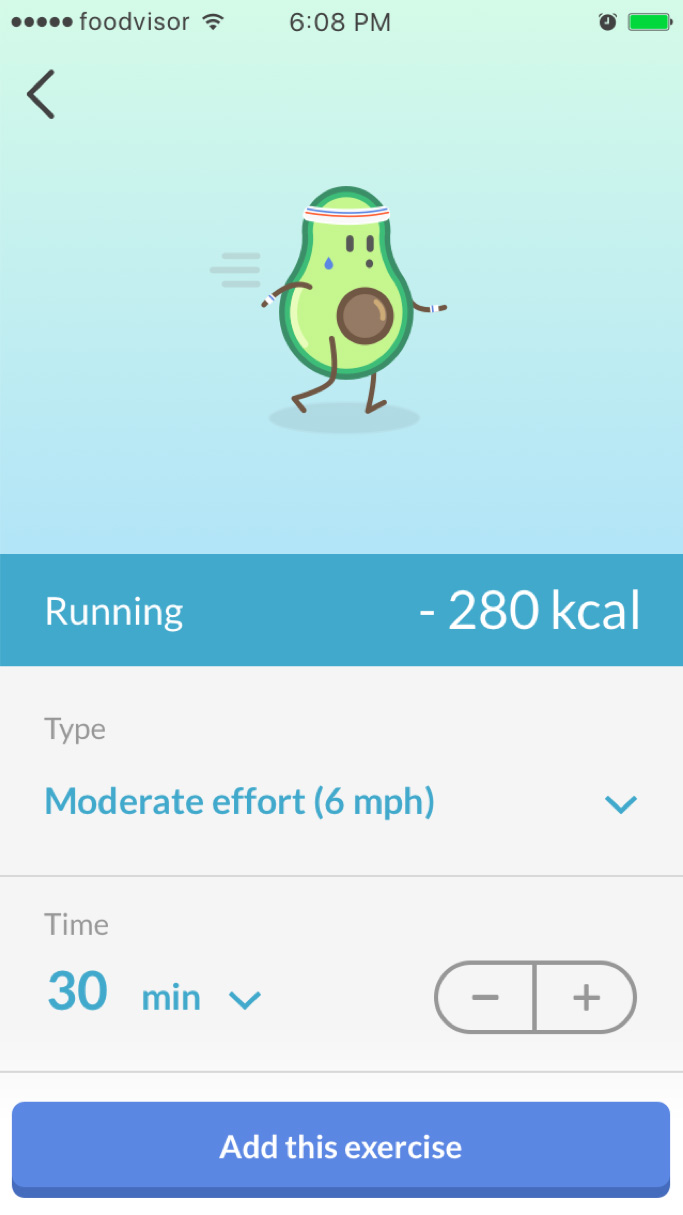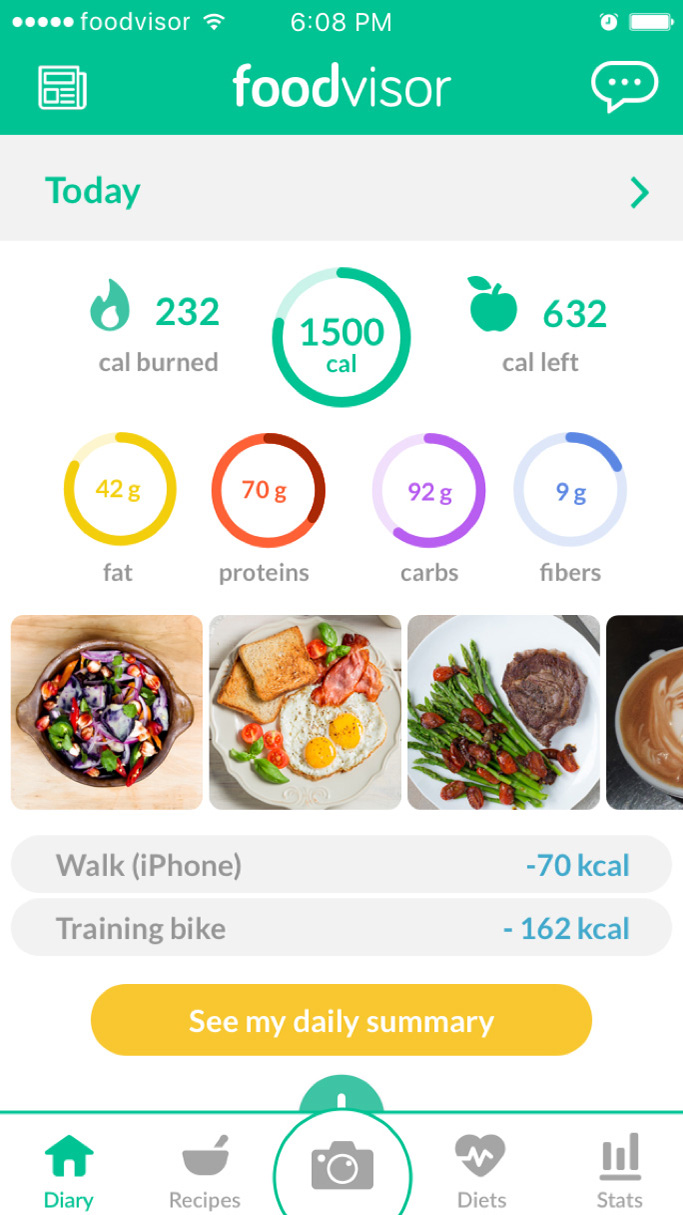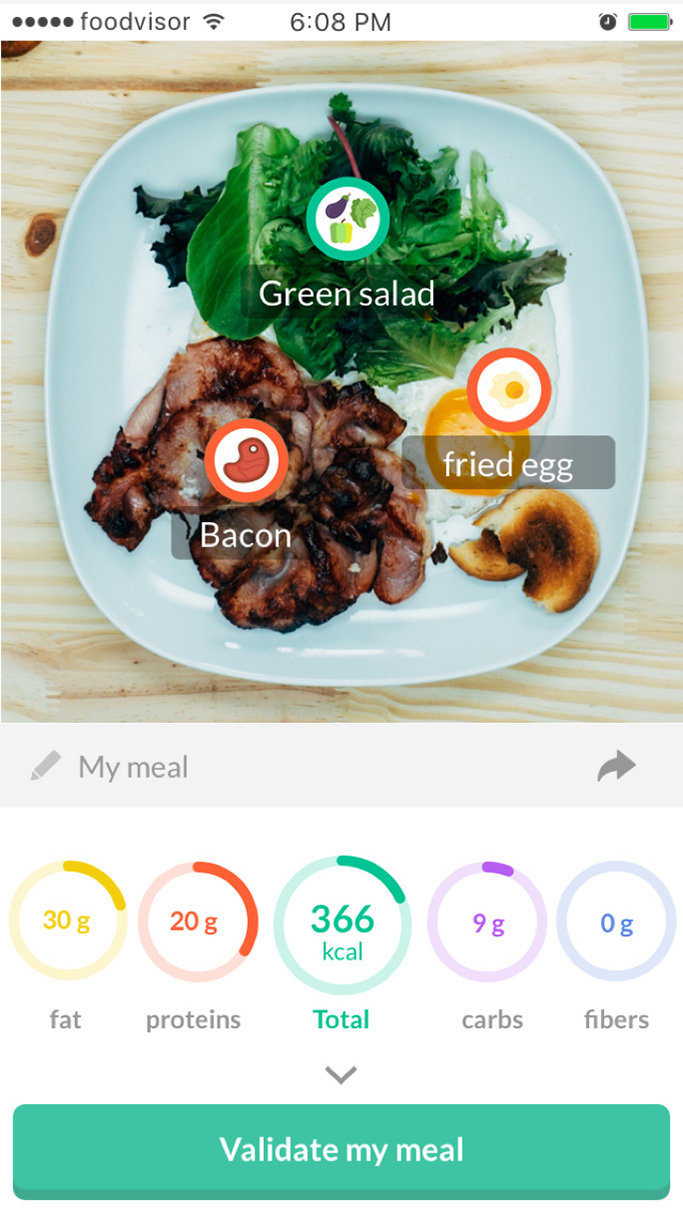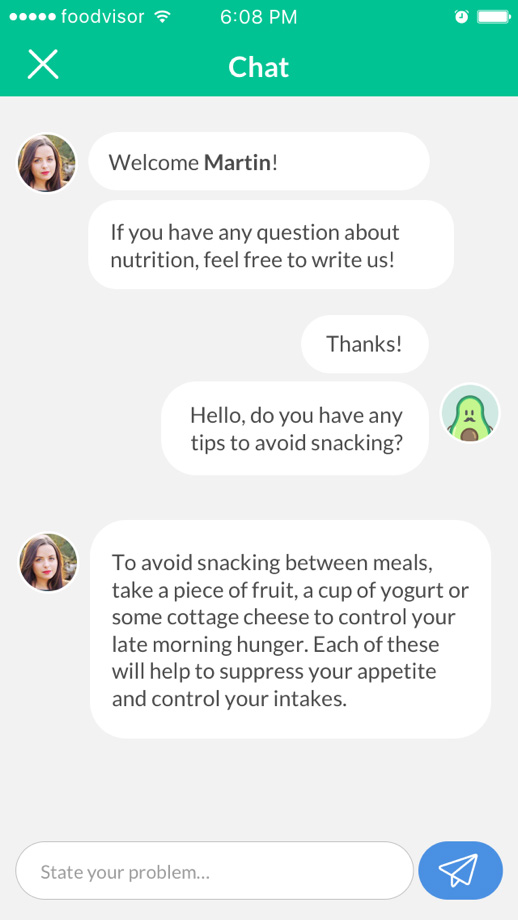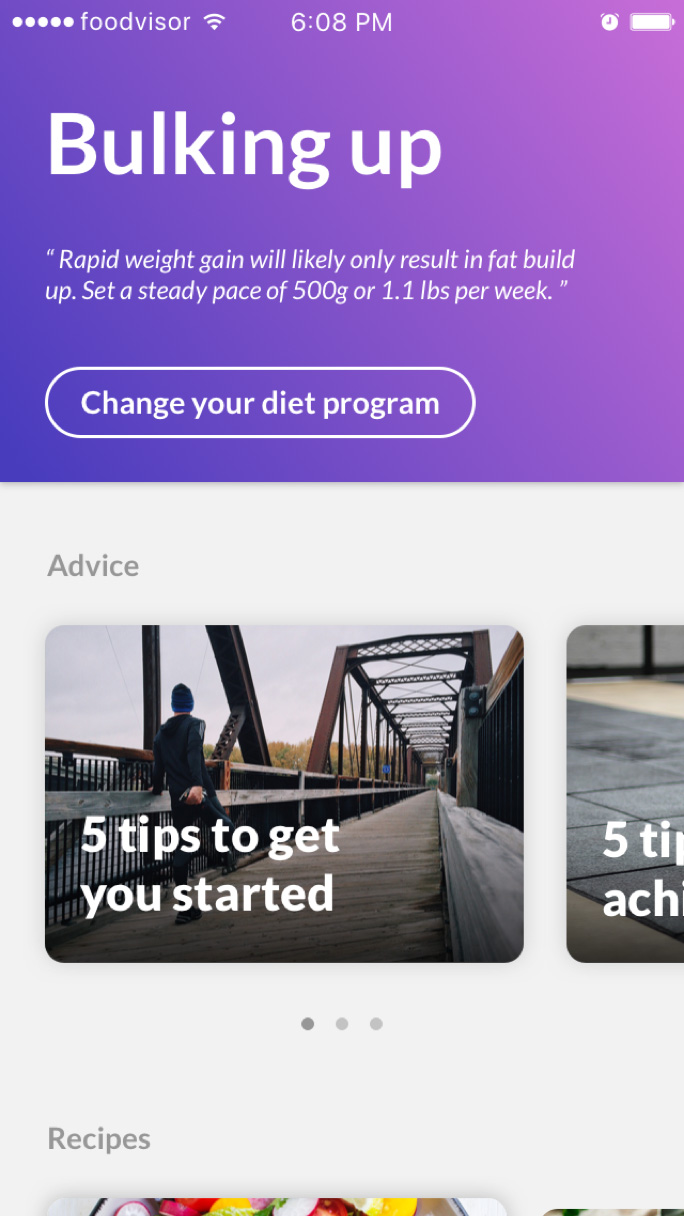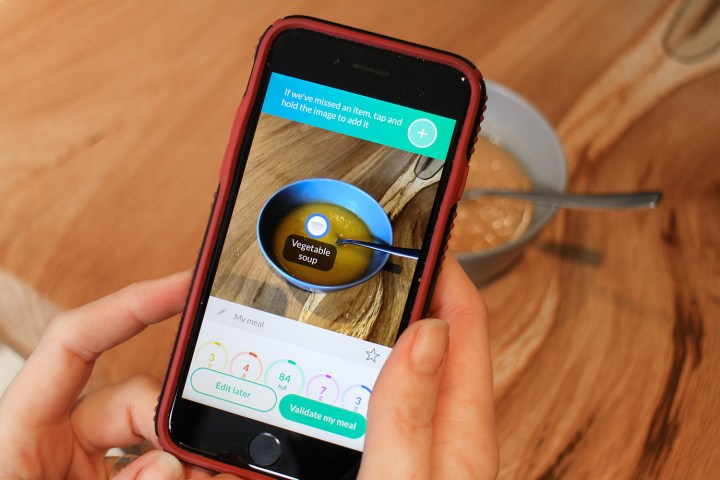
What if you could snap a photo of your food with your phone to get a complete calorific and nutritional breakdown? No laboriously weighing ingredients, carefully counting up calories yourself, or estimating what makes up a dish. That’s exactly what a new app from France, called Foodvisor, is aiming to do.
Just snap a pic
“All you have to do is take a picture of your plate and we are able to identify the different items and give you the nutritional facts,” Aurore Tran, co-founder and marketing director of Foodvisor, told Digital Trends.
The Foodvisor app is available for iOS or Android and it’s completely free. You can use it to photograph a meal and it will attempt to identify the food and give you a breakdown, which includes the total calorie count, fat, proteins, carbs, and fibers. You have a target calorie count that will help you to lose weight, assuming you need to, and the app records your intake and progress. You can improve the data by entering your weight, height, gender, and age, and your progress is plotted on a chart over time.
Counting calories can be an effective way to manage your weight. If you can work out how many calories you need daily to maintain your current weight, then you know that you can lose weight by decreasing that number. And a lot of us need to lose weight. The World Health Organization estimated that 1.9 billion adults were overweight in 2016 and, if you consider that obesity has tripled since 1975, that figure is likely to be even higher today.
“Millions of people use apps like MyFitnessPal every day,” Tran said. “The problem is that they all require manual logging, so it’s time-consuming and most people quit because it’s too much effort. The idea behind Foodvisor was to make it as easy as taking a picture.”
Foodvisor was founded in 2015 and it began life as a research project with three engineers — Charles Boes, Yann Giret, and Gabriel Samain — from École Centrale Paris (the leading mathematics and computer school in France) joining forces with business brain Tran. Their background in artificial intelligence led them to develop an algorithm capable of analyzing photos of food and producing useful nutritional information.
“Now it can recognize more than 1,000 different food items.”
“When we started, the app could only recognize five or six items, but now it can recognize more than 1,000 different food items,” Tran said. “It’s a deep learning algorithm, so we are using our user’s images to train it to be more accurate, and so it’s improving every day.”
You can also scan barcodes, and Foodvisor currently has more than 700,000 barcodes in its database, with more added daily. If you scan something that isn’t there already, you can add it yourself and it will recognize the item the next time you scan it.
The app launched in France in 2018 and already has 1 million users. It’s now expanding to the rest of the Europe starting with the U.K., Germany, Spain, and Italy, with a U.S. launch planned before the end of the year.

We tested it out in the U.K. and compared the results with our manual logging in MyFitnessPal. We found that Foodvisor correctly identified everything from bread to paella, but there’s still some work involved in accurate recording. For example, it recognized paella, but based the calorie estimate on a classic recipe, which resulted in a discrepancy of a few hundred calories, because our recipe uses less oil and slightly different ingredients.
“It’s a deep learning algorithm, so we are using our user’s images to train it to be more accurate, and so it’s improving every day.”
Much depends on what you’re eating. It had no trouble identifying a Jacobs Cream Cracker, for example, but homemade meals will inevitably be more of a challenge. There were also a few things it couldn’t recognize, but the suggestions were generally solid. There’s a learning curve for the app, and you may need to manually log and tweak things at first, including your serving size, but over time it should get better and better.
“You can create your own recipes and add your favorite chocolate cake that you like to make to Foodvisor,” Tran said. “The algorithm is smart enough that when you next take a picture of a chocolate cake it knows if it’s your own, it’s a specific brand, or you bought it in the bakery.”
Expansion
If you were starting from scratch, then Foodvisor is certainly no more laborious than the alternatives. It offers a real shortcut for some things, but if you already have a store of meals in a health and fitness app, like MyFitnessPal, then it may be a tougher sell.
As Foodvisor has primarily learned from a French audience so far, there were U.K. barcodes and meals that it didn’t recognize, but that should change if the user base grows. The same thing applies to the U.S.
“We are trying to create a community of engaged users who will help us improve the product,” Tran said. “We don’t have 100 percent accuracy, but we are trying to make it easy and fun to diet and we also provide a unique option of personalized advice and coaching that you won’t find in other apps.”
Foodvisor offers a premium subscription service at $10 per month, or $60 for the year, which gives you access to chat to nutritionists and dietitians who will suggest a tailor-made diet for you. You can specify your preferred type of diet, whether it’s vegetarian, Keto, low carb, or something else and get personalized advice and recipes. A daily report arrives if you opt for the premium version, with advice on how to improve your diet and feedback on where you went right or wrong.
“It’s like having a nutritionist in your pocket,” Tran said.
The plan is that the basic, free app, which can scan and recognize foods, will stay free, and people who want a deeper level of advice and help can sign up for the subscription service.
The app is still being developed and improved. Certain things, such as adding multiple food you’ve already photographed, are not very intuitive right now. Tran said the company is listening to users and making tweaks all the time. They also plan to expand on what’s there.
“Gamification is one of the features we’re working on in the coming months.”
“Gamification is one of the features we’re working on in the coming months,” Tran said. “We think it could really improve our engagement and encourage people to keep going with their weight loss.”
They are also hoping to widen the social aspect and enable people to interact through the app and form social groups to support each other. There’s clearly some real potential for sharing photos of meals and recipes in Foodvisor, which people love to do. But having the complete nutritional breakdown alongside the picture adds an extra level for people who are consciously dieting.
You can try the app out for yourself today, though we would caution that it won’t work as well for you right now if you’re based in the U.S. or U.K. as it will if you’re based in France. If Foodvisor can build a devoted community, it has real potential to grow into an invaluable resource for healthier eating.
We’re going to continue testing it and try out the premium version, so stay tuned for more.
